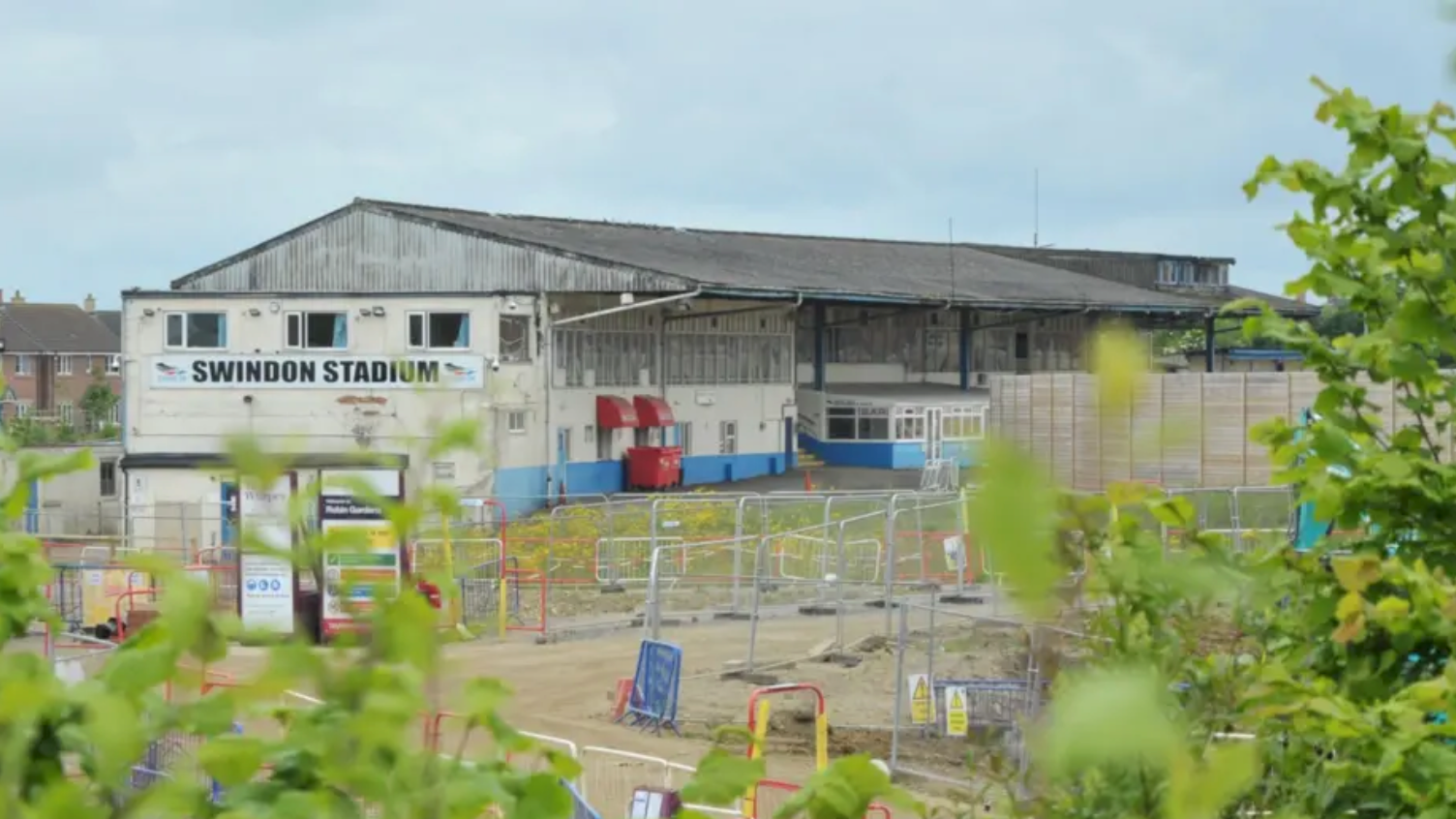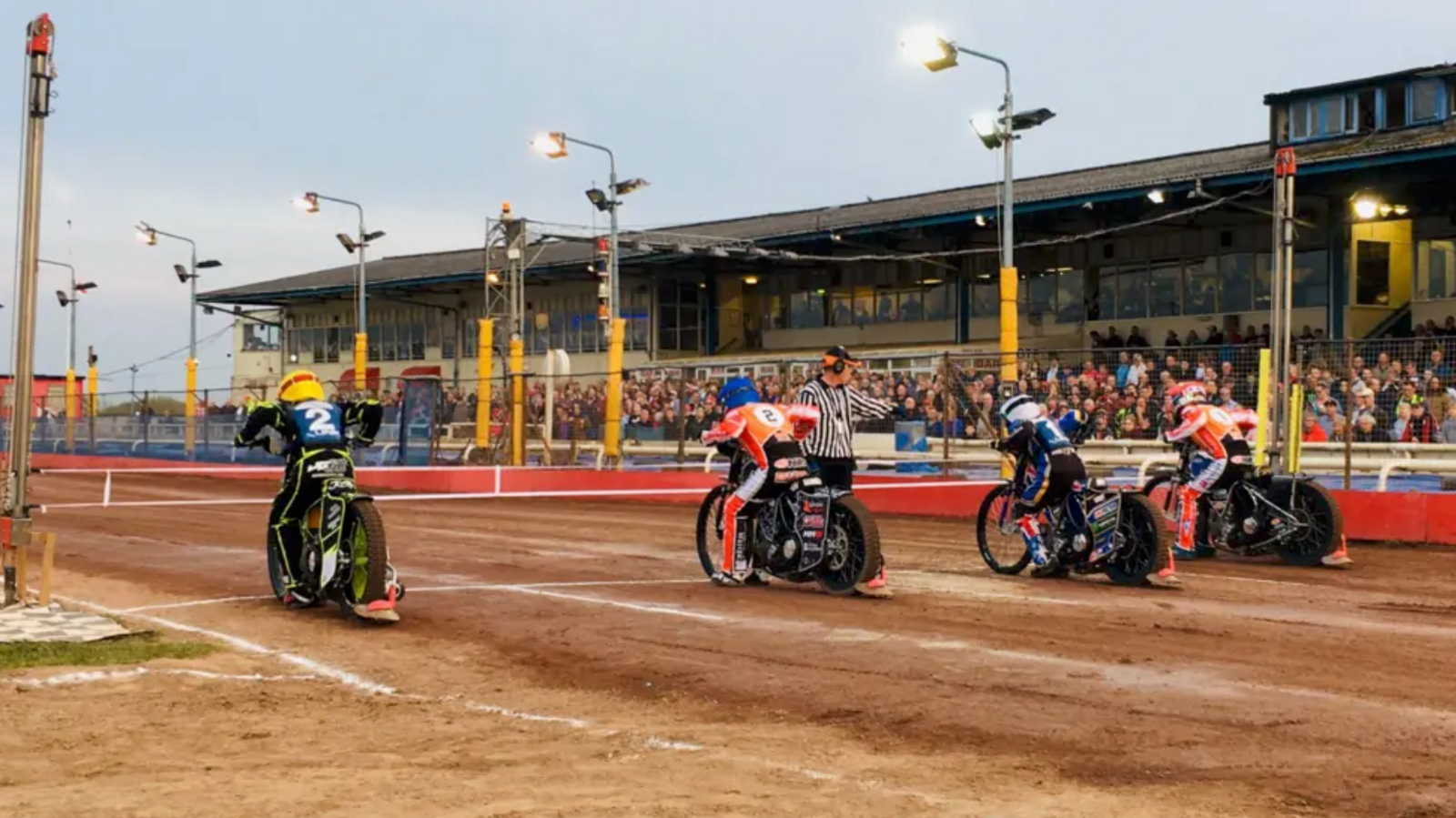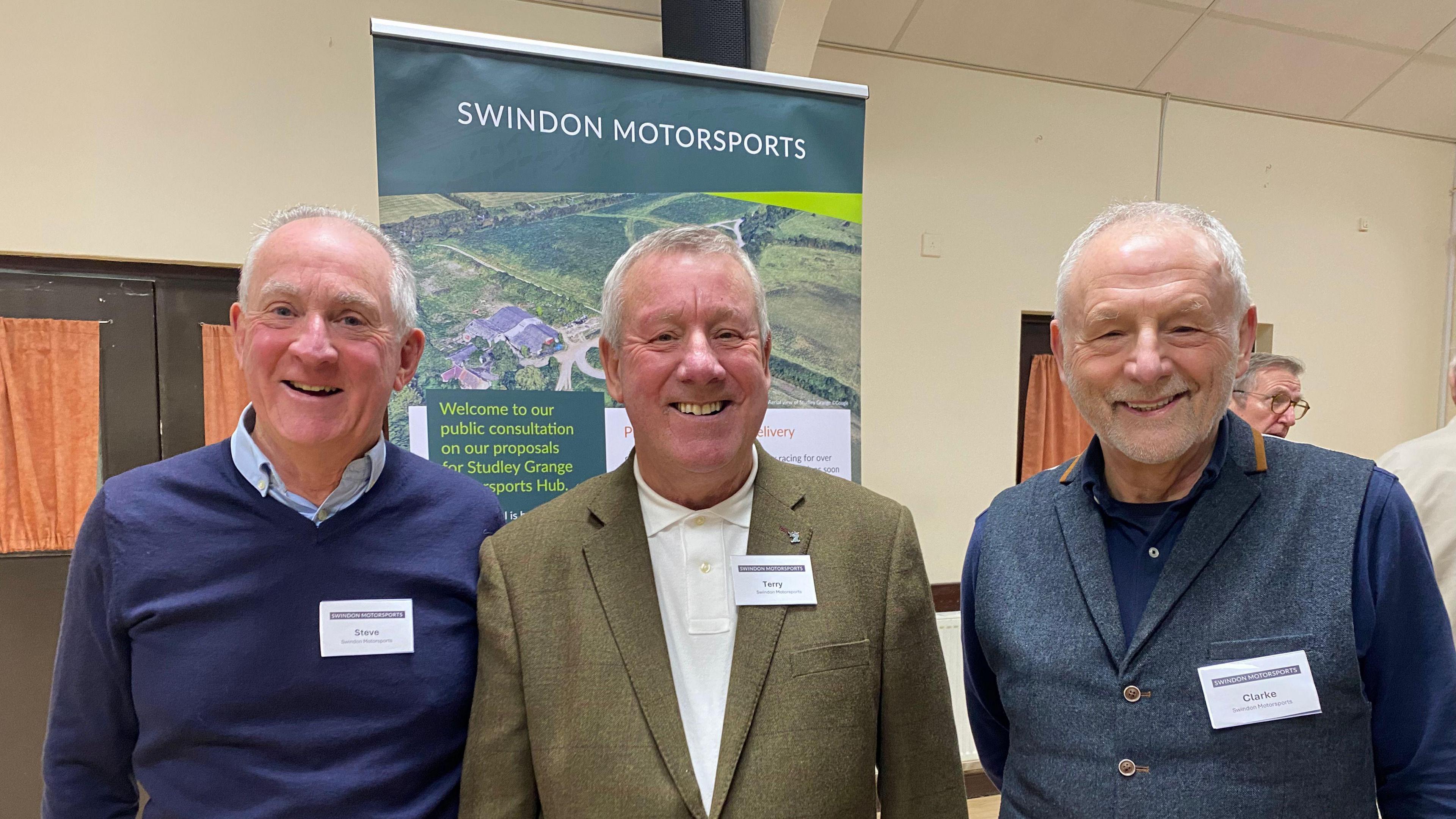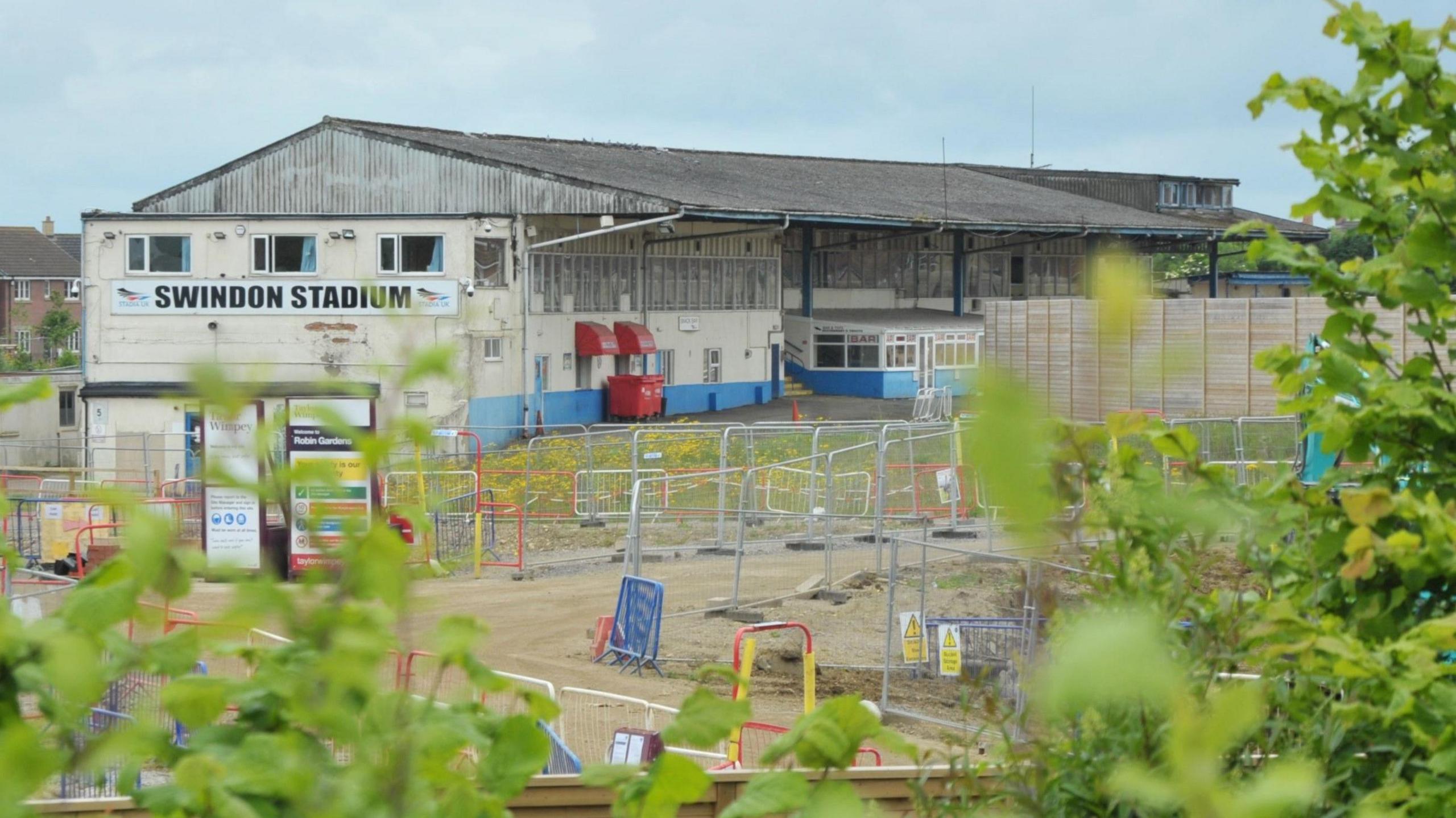Greyhound stadium could be turned into 130 homes

The stadium could be redeveloped into homes, shops and takeaways
- Published
A greyhound-racing stadium could be transformed into a village with 130 homes, it has emerged, after planning applications were accidentally released prematurely.
Swindon Abbey Stadium, previously used for speedway, would be demolished for the development, which would also have shops and takeaway food outlets.
Stadium owner Gaming International recently announced that greyhound racing would not continue there beyond 2025.
Swindon North MP Will Stone said that, as long as the greyhounds were rehomed properly, the plan was "positive". He said: "I'm quite excited about actually getting something at that site."
Mr Stone added: "What I didn't want was it to have no leisure and no facilities there for the community and end up being just another derelict building."
The company leading a consultation on the stadium's redevelopment, Thirty4/7 Communications, said some of the information in the applications had been mistakenly shared online.
Those who have enjoyed speedway at the 2,000-capacity stadium, which opened in 1949, were not pleased.
Andy Freegard, from the group Swindon Needs Speedway, said the potential loss of the site was "very sad news".
Mr Freegard said: "From a speedway perspective, there's a long history there back to the 40s, it's been a provision for the community for a very long time."
He said a member of the group referred to speedway as his "religion" and the Abbey Stadium as his "church".

Speedway riders may be moved to a new site further out of town
There have been consultations on a new speedway site – Studley Grange Motorsports Hub, close to the M4.
Jim Robbins, leader of Swindon Borough Council, said councillors were "doing everything we can" to protect the the Abbey Stadium.
Floyd Amphlett, features editor of Greyhound Racing UK, said the two track activities had fallen victim to urban sprawl, with sites being bought by developers.
"Speedway and greyhound racing have both suffered over the years," he said.
"The reason is, when they were built 60 to 70 years ago, they were outside of towns, now they are in towns and prime building sites."
Get in touch
Tell us which stories we should cover in Wiltshire
Follow BBC Wiltshire on Facebook, external, X, external and Instagram, external. Send your story ideas to us on email or via WhatsApp on 0800 313 4630.
- Published17 March

- Published19 February

- Published14 January
